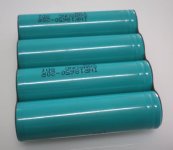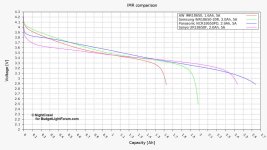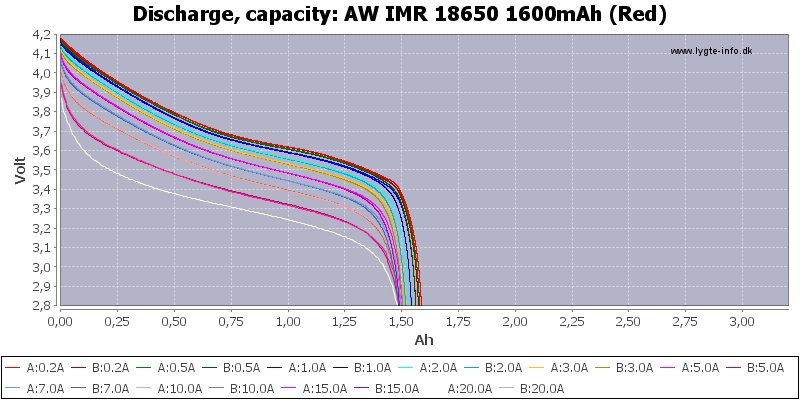migueralliart
10 kW
I've been communicating back and forth with an eBay seller who has a big selection of brand new power tool cells. Apparently they spot weld your packs for free. I was interested in this cell but wanted to see some discharge graphs. Fortunately for us a member of the budget light forum tested these and gave me permission to share here.
I ordered 15 4P bricks and asked the eBay seller to send me pics of the spot welds and they do a pretty good job.
I believe these are NCA according to the Samsung SDI page.
I'm awaiting shipment today or tomorrow... Will post my review here.
Update 3/8/13
8 bricks arrived today well packed. I'm still waiting on the other 7 bricks the tracking number says it is going to be delivered tomorrow so we'll see. I want them here to start the pack build thread.
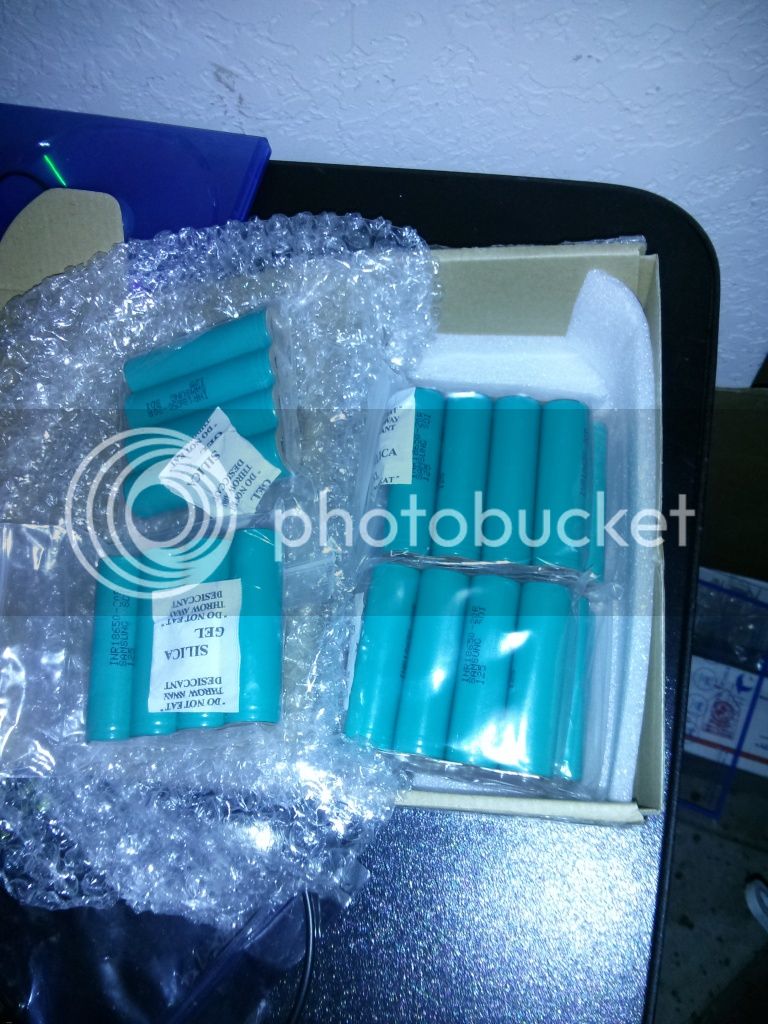
Update 3/22/13
Continuing the build now arranged in 15s just need to add the balance leads, discharge wires and heatshrink wrap it.
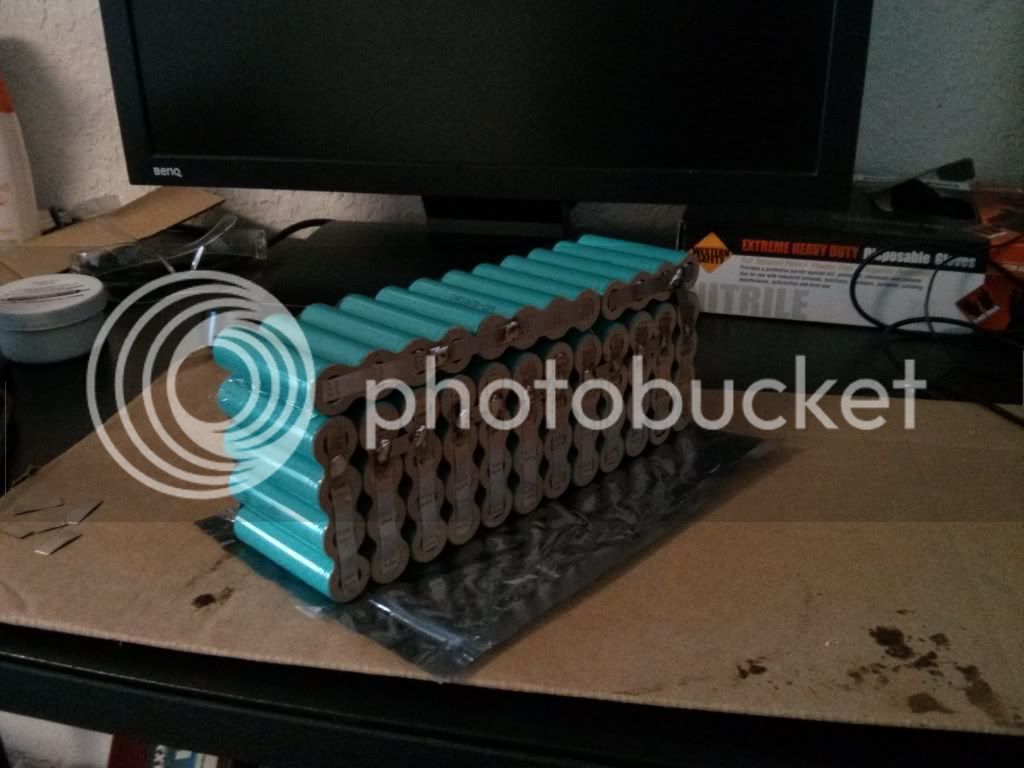
Update 3/25/13
So I got around to finish this pack. It is a 15S 8Ah pretty compact pack. Added 22ga wire for balance wires to a DB25 breakout board for ease of balancing. I hope to enclose the breakout board in a small plastic enclosure or something. Discharge leads are 12ga cable with 45 amp andersons and a precharge plug already installed. The heatshrink I bought from batteryspace a while ago.
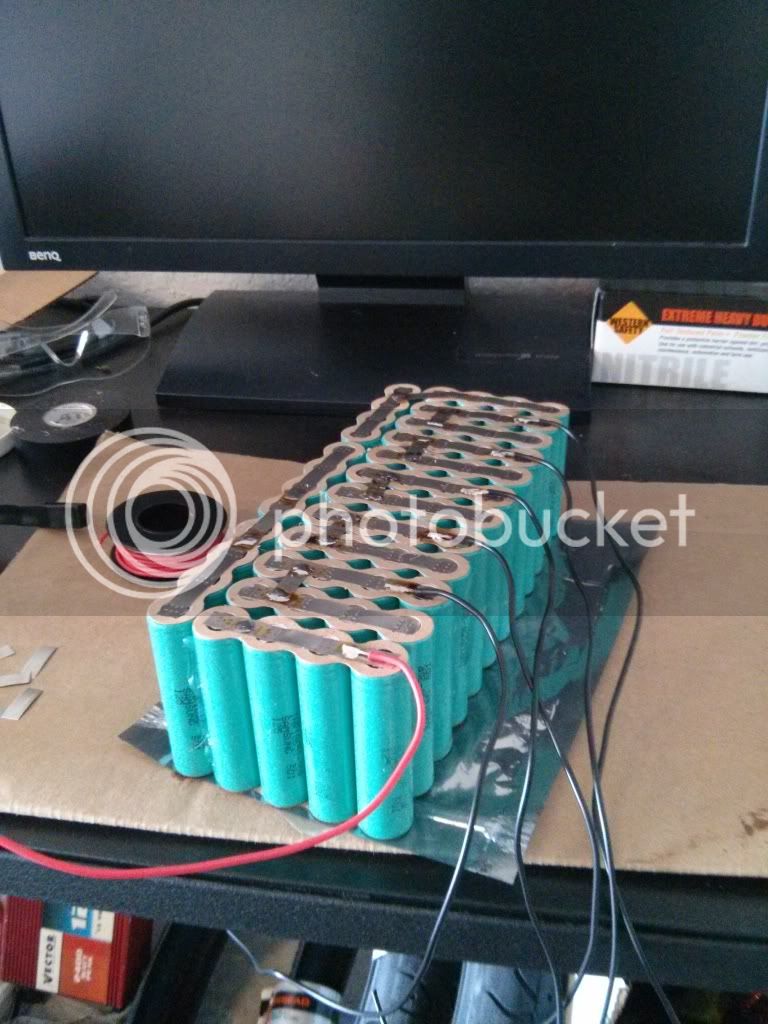
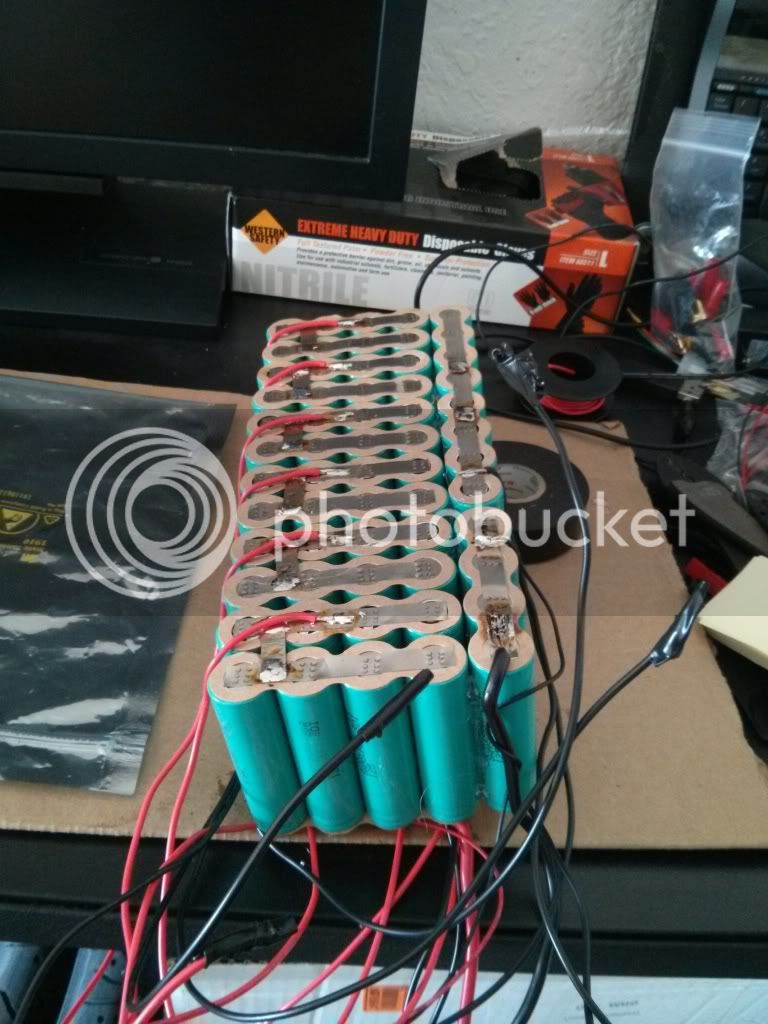
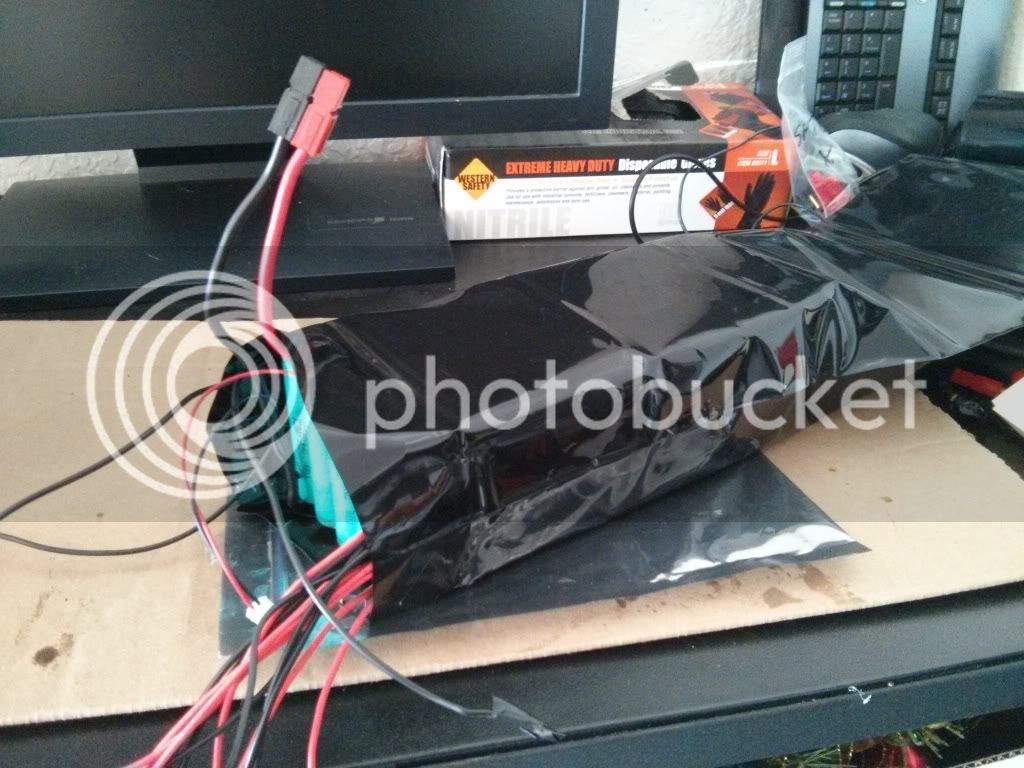
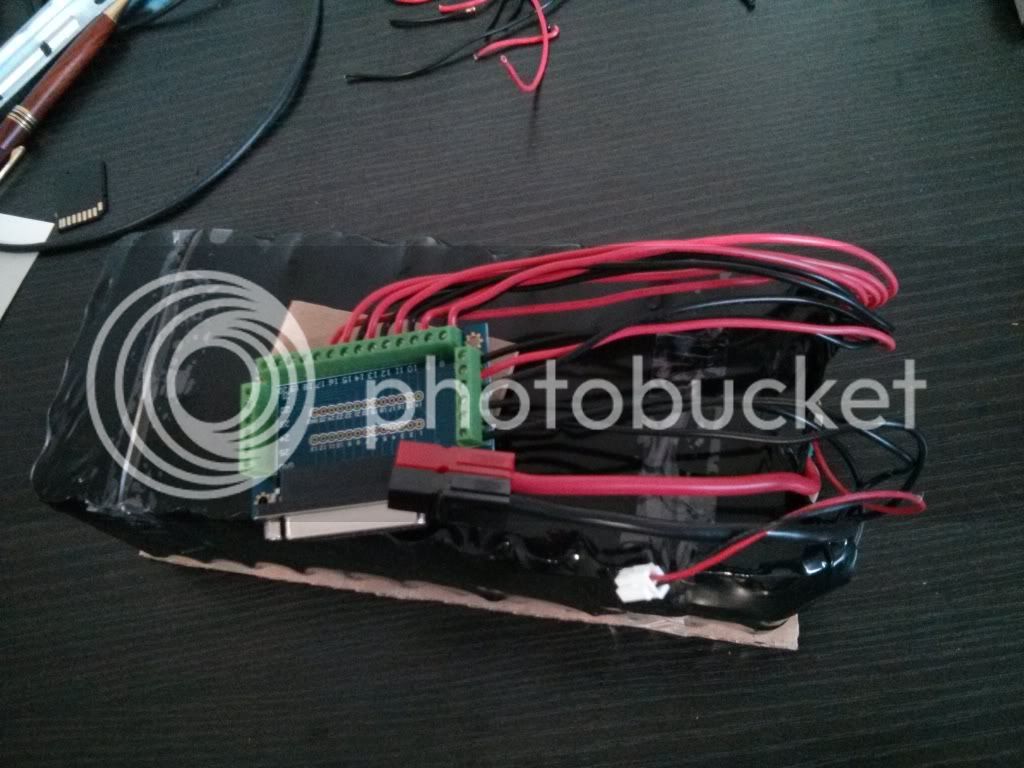
I ordered 15 4P bricks and asked the eBay seller to send me pics of the spot welds and they do a pretty good job.
I believe these are NCA according to the Samsung SDI page.
I'm awaiting shipment today or tomorrow... Will post my review here.
Update 3/8/13
8 bricks arrived today well packed. I'm still waiting on the other 7 bricks the tracking number says it is going to be delivered tomorrow so we'll see. I want them here to start the pack build thread.

Update 3/22/13
Continuing the build now arranged in 15s just need to add the balance leads, discharge wires and heatshrink wrap it.

Update 3/25/13
So I got around to finish this pack. It is a 15S 8Ah pretty compact pack. Added 22ga wire for balance wires to a DB25 breakout board for ease of balancing. I hope to enclose the breakout board in a small plastic enclosure or something. Discharge leads are 12ga cable with 45 amp andersons and a precharge plug already installed. The heatshrink I bought from batteryspace a while ago.






